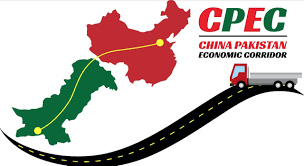The China-Pakistan Economic Corridor (CPEC) is not just a collection of infrastructure projects—it’s a lifeline for Pakistan’s economic future. In 2025, CPEC has evolved into a transformative initiative, reshaping Pakistan’s economy across multiple sectors. From highways to high-tech industries, the scope of CPEC is expansive and holds the promise of a prosperous future for the nation.
Background of CPEC
The roots of The China-Pakistan Economic Corridor (CPEC) trace back to 2013 when Pakistan and China inked an agreement under the Belt and Road Initiative (BRI). The project’s primary objectives include enhancing connectivity, boosting trade, and fostering sustainable development. Over the years, CPEC has grown from an ambitious vision to a reality, with several projects nearing completion in 2025.
Infrastructure Development
One of the most visible impacts of The China-Pakistan Economic Corridor (CPEC) is the development of Pakistan’s infrastructure.
- Highways and Motorways: New road networks, such as the Karachi-Lahore Motorway, have drastically reduced travel times and improved connectivity.
- Railway Modernization: Upgrades to Pakistan’s rail system, including the Main Line-1 (ML-1) project, have modernized the transport of goods and passengers.
- Ports: Gwadar Port stands as a symbol of progress, connecting Pakistan to global trade networks.
Energy Sector Transformation
CPEC has been instrumental in addressing Pakistan’s energy crisis.
- Power Projects: Coal, solar, and hydropower projects have added thousands of megawatts to the national grid.
- Renewable Energy: Solar farms and wind energy projects are helping Pakistan transition to greener energy sources, reducing its reliance on fossil fuels.
Industrial Growth and Special Economic Zones (SEZs)
The China-Pakistan Economic Corridor (CPEC) Special Economic Zones are at the heart of industrial growth.
- SEZ Development: Zones like Rashakai and Dhabeji are hubs for manufacturing and exports.
- Job Creation: These zones have created thousands of jobs, uplifting local communities and providing skills training.
Trade and Connectivity
With new trade routes, Pakistan is becoming a vital hub in regional connectivity.
- Gwadar’s Role: The port’s strategic location makes it a gateway for trade with Central Asia, the Middle East, and Africa.
- Economic Corridors: Enhanced routes have streamlined trade, making it faster and more efficient.
Foreign Direct Investment (FDI)
The China-Pakistan Economic Corridor (CPEC) has bolstered FDI inflows, making Pakistan an attractive destination for global investors.
- Chinese Investment: Billions of dollars have poured into infrastructure, energy, and technology.
- Global Interest: The success of CPEC projects has encouraged other nations to invest in Pakistan.
Impact on Agriculture
Agriculture, a backbone of Pakistan’s economy, has gained significantly from CPEC.
- Modern Techniques: Projects have introduced advanced farming methods, improving yields.
- Agro-Exports: Enhanced connectivity has boosted agricultural exports, particularly to China.
Tourism and Cultural Exchange
CPEC is not just about economics; it’s also about cultural enrichment.
- Tourist Destinations: Infrastructure development has made it easier to access scenic locations like Gilgit-Baltistan.
- Cultural Ties: Increased collaboration between Pakistan and China has fostered stronger cultural understanding.
Technological Advancements
Technology is a key focus area under CPEC.
- Smart Cities: Plans for smart cities like Gwadar are in motion, with state-of-the-art facilities.
- Digital Infrastructure: Projects are introducing high-speed internet and tech hubs across Pakistan.
Challenges Facing CPEC
While the benefits are immense, The China-Pakistan Economic Corridor (CPEC) is not without challenges.
- Political Instability: Domestic politics can affect project timelines.
- Security Issues: Ensuring the safety of CPEC projects remains a priority.
- Debt Concerns: Managing loans and investments responsibly is crucial for long-term success.
Future Prospects of CPEC
Looking ahead, CPEC offers immense potential for growth. By 2030, Pakistan is poised to become a regional powerhouse, with stronger trade ties and a diversified economy. Continued focus on sustainability and innovation will be key to its success.
Conclusion
The China-Pakistan Economic Corridor (CPEC) in 2025 is a game-changer for Pakistan’s economy. It has not only improved infrastructure and energy but also opened doors for trade, investment, and job creation. While challenges remain, the opportunities far outweigh the risks, making CPEC a cornerstone of Pakistan’s economic future.


